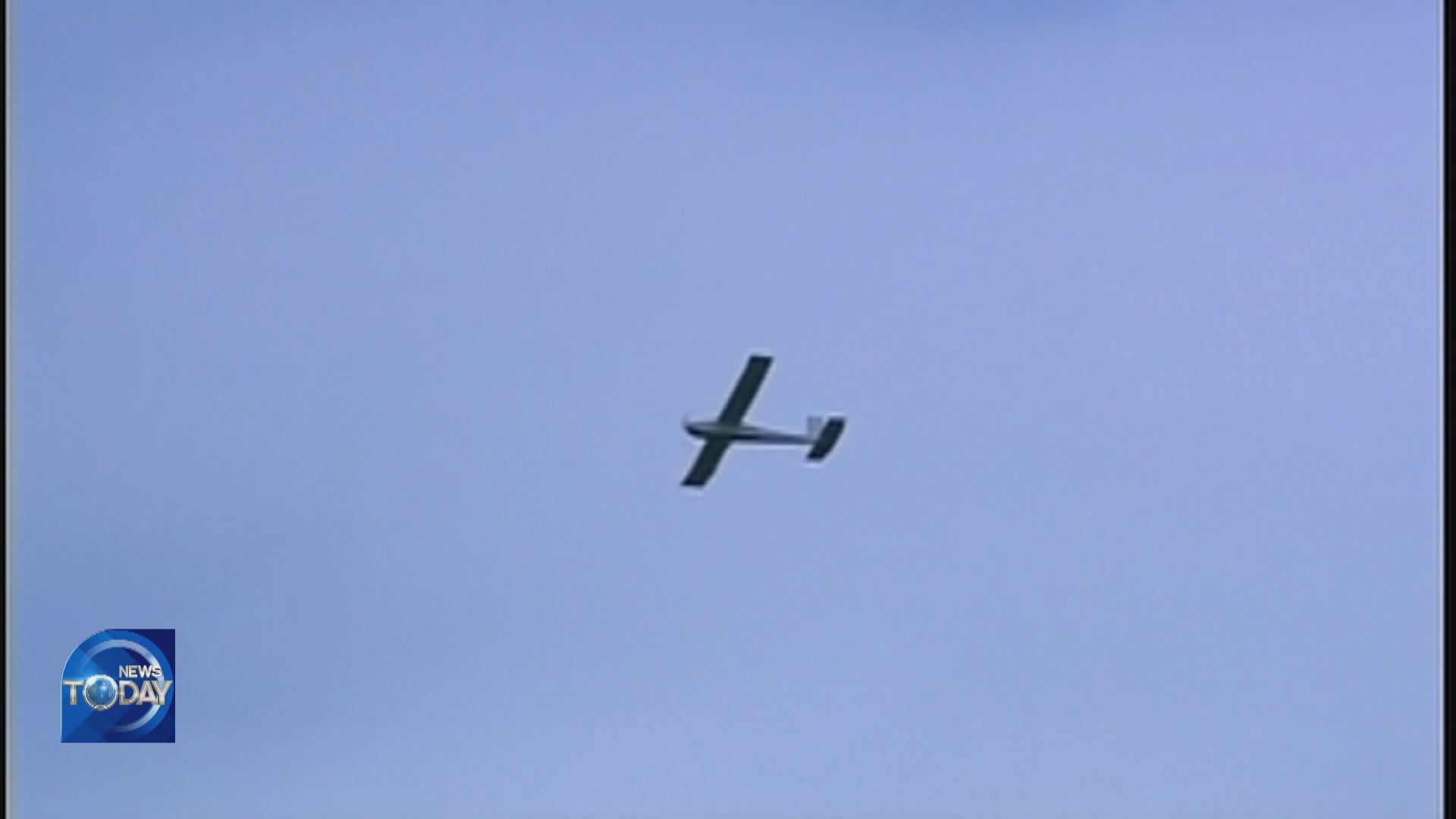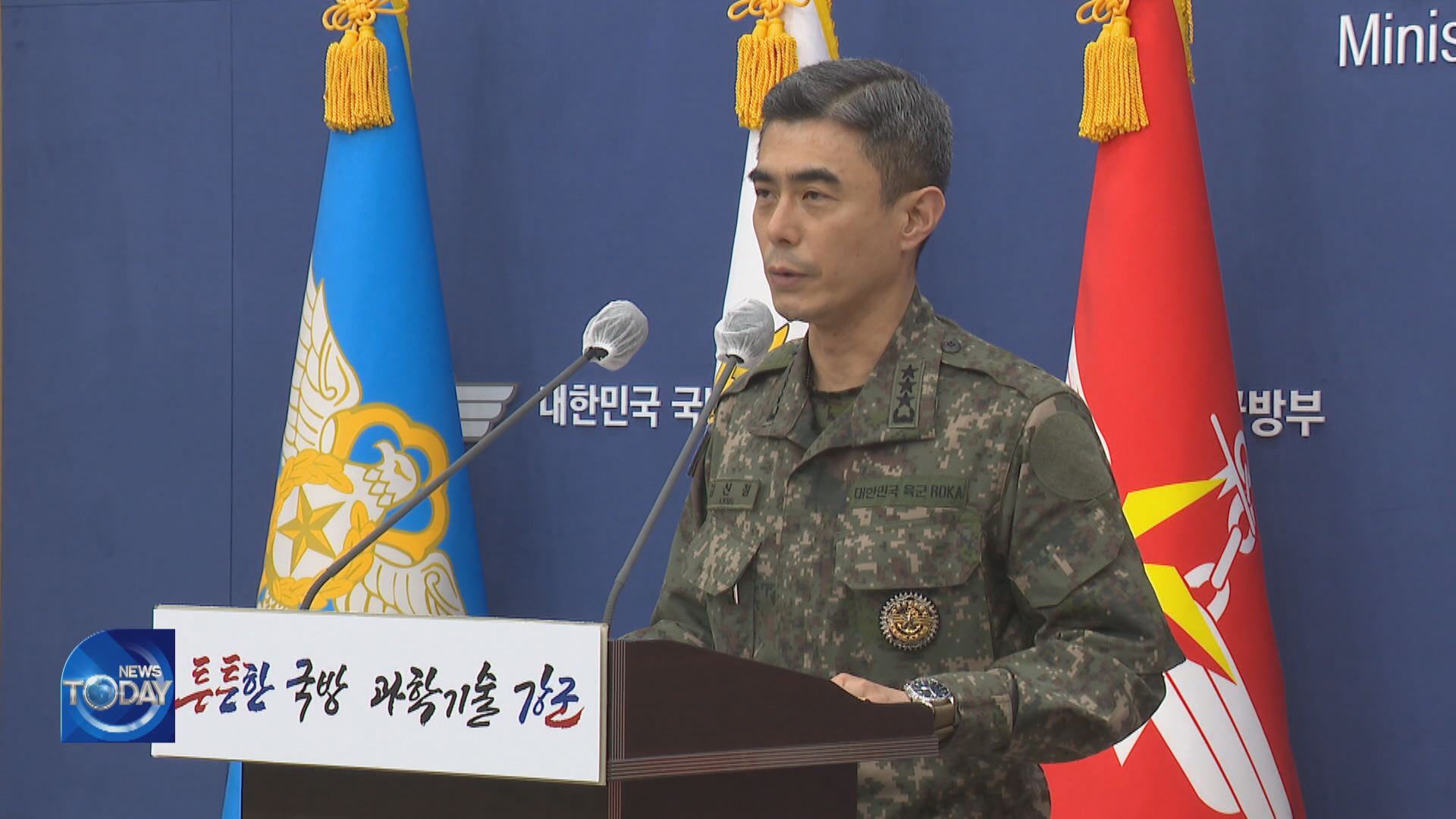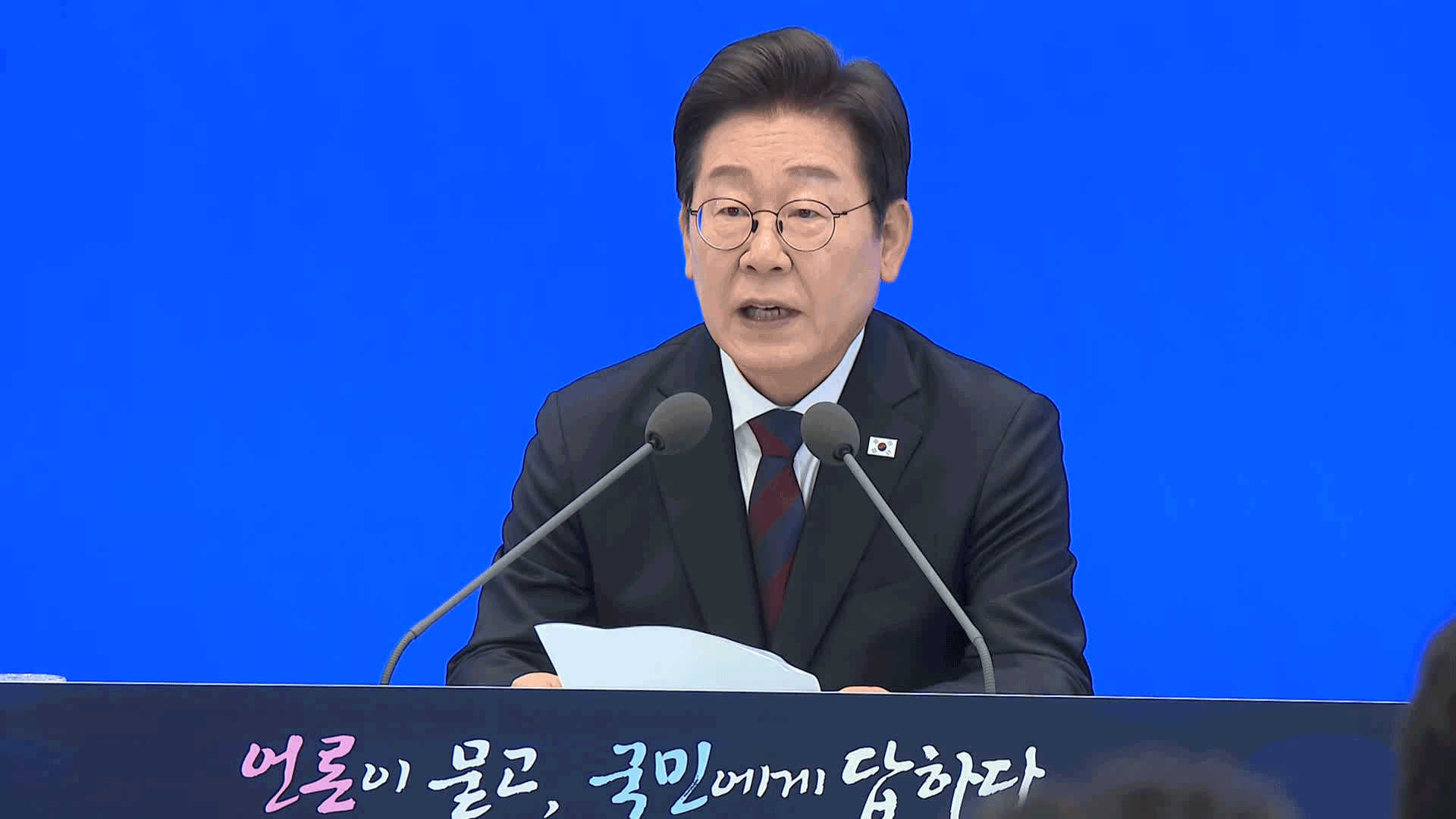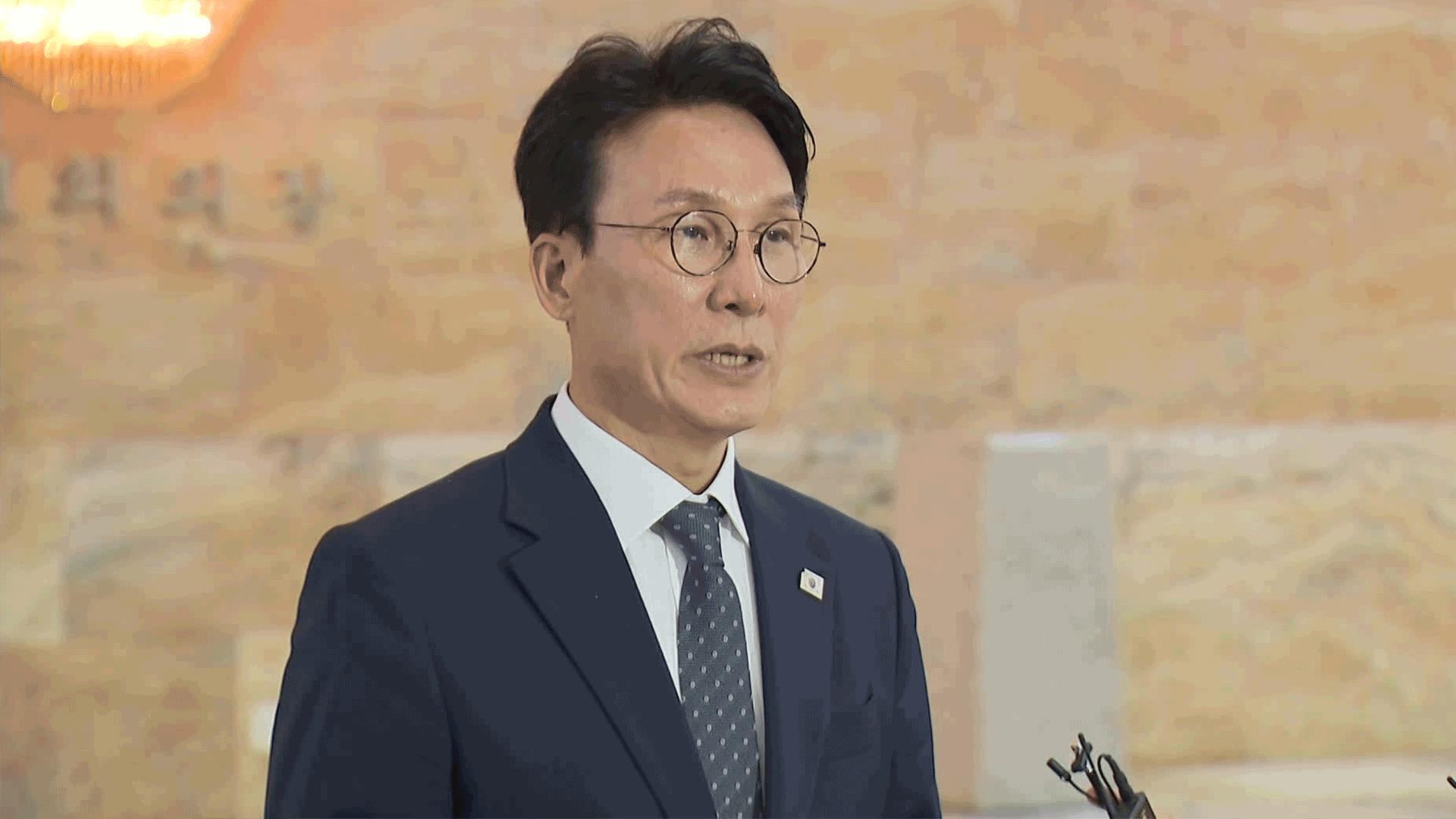SMALL N. KOREAN UAVs ESCAPE RADAR
입력 2022.12.28 (15:12)
수정 2022.12.28 (16:45)
읽어주기 기능은 크롬기반의
브라우저에서만 사용하실 수 있습니다.
[Anchor Lead]
It turns out the South Korean military was unable to shoot down the UAVS as they escaped the detection range of South Korea's surface-to-air weapons radars. That is why they broke through the defense system and crossed Seoul's northern part from west to east, hovering over the area for about an hour.
[Pkg]
This North Korean unmanned aerial vehicle was detected in Gangwon-do Province in 2017. The length of its wings, which was less than 2.5 meters in 2014, had grown to 2.86 meters. The upgraded drone was able to fly 490km over South Korean territory.
[Soundbite] Kim Jong-sung(Agency for Defense Development(Jun. 2017)) : "The wings are slightly wider due to increased weight and the engine output is stronger. Although these drones look unchanged on the outside, their flight range is about twice as long now."
Now, five years and multiple upgrades later, the North Korean drones were even able to escape the surface-to-air weapons radars of the South Korean military. The military says the drones either escaped the radars' detection range or were impossible to spot with the naked eye due to topography. The air defense system installed on the ground was not used on time. The military was able to at least mobilize Air Force jets after partially detecting the drones with air defense radars and thermal imaging cameras.
[Soundbite] Kang Shin-chul(Director of Operations, JCS) : "The North Korean UAVs are less than 3 meters in size. Our radars cannot easily detect or strike such small drones."
The drones flew at relatively slow speed of 100 km an hour at a low altitude of around 3 km. They crossed Seoul's northern part from west to east, hovering over the area for about an hour. Analysts say the drones moved according to pre-inserted coordinates and were not operated remotely. A JCS official said the North Korean UAVs did not approach CheongWaDae or Yongsan. However, the official added no one knows yet if the drones videotaped the presidential office or other major facilities because they have yet to be found. The official said if the drones ever approach Yongsan, Seoul's advanced weapons system deployed there will be able to bring them down.
It turns out the South Korean military was unable to shoot down the UAVS as they escaped the detection range of South Korea's surface-to-air weapons radars. That is why they broke through the defense system and crossed Seoul's northern part from west to east, hovering over the area for about an hour.
[Pkg]
This North Korean unmanned aerial vehicle was detected in Gangwon-do Province in 2017. The length of its wings, which was less than 2.5 meters in 2014, had grown to 2.86 meters. The upgraded drone was able to fly 490km over South Korean territory.
[Soundbite] Kim Jong-sung(Agency for Defense Development(Jun. 2017)) : "The wings are slightly wider due to increased weight and the engine output is stronger. Although these drones look unchanged on the outside, their flight range is about twice as long now."
Now, five years and multiple upgrades later, the North Korean drones were even able to escape the surface-to-air weapons radars of the South Korean military. The military says the drones either escaped the radars' detection range or were impossible to spot with the naked eye due to topography. The air defense system installed on the ground was not used on time. The military was able to at least mobilize Air Force jets after partially detecting the drones with air defense radars and thermal imaging cameras.
[Soundbite] Kang Shin-chul(Director of Operations, JCS) : "The North Korean UAVs are less than 3 meters in size. Our radars cannot easily detect or strike such small drones."
The drones flew at relatively slow speed of 100 km an hour at a low altitude of around 3 km. They crossed Seoul's northern part from west to east, hovering over the area for about an hour. Analysts say the drones moved according to pre-inserted coordinates and were not operated remotely. A JCS official said the North Korean UAVs did not approach CheongWaDae or Yongsan. However, the official added no one knows yet if the drones videotaped the presidential office or other major facilities because they have yet to be found. The official said if the drones ever approach Yongsan, Seoul's advanced weapons system deployed there will be able to bring them down.
■ 제보하기
▷ 카카오톡 : 'KBS제보' 검색, 채널 추가
▷ 전화 : 02-781-1234, 4444
▷ 이메일 : kbs1234@kbs.co.kr
▷ 유튜브, 네이버, 카카오에서도 KBS뉴스를 구독해주세요!
- SMALL N. KOREAN UAVs ESCAPE RADAR
-
- 입력 2022-12-28 15:12:00
- 수정2022-12-28 16:45:07

[Anchor Lead]
It turns out the South Korean military was unable to shoot down the UAVS as they escaped the detection range of South Korea's surface-to-air weapons radars. That is why they broke through the defense system and crossed Seoul's northern part from west to east, hovering over the area for about an hour.
[Pkg]
This North Korean unmanned aerial vehicle was detected in Gangwon-do Province in 2017. The length of its wings, which was less than 2.5 meters in 2014, had grown to 2.86 meters. The upgraded drone was able to fly 490km over South Korean territory.
[Soundbite] Kim Jong-sung(Agency for Defense Development(Jun. 2017)) : "The wings are slightly wider due to increased weight and the engine output is stronger. Although these drones look unchanged on the outside, their flight range is about twice as long now."
Now, five years and multiple upgrades later, the North Korean drones were even able to escape the surface-to-air weapons radars of the South Korean military. The military says the drones either escaped the radars' detection range or were impossible to spot with the naked eye due to topography. The air defense system installed on the ground was not used on time. The military was able to at least mobilize Air Force jets after partially detecting the drones with air defense radars and thermal imaging cameras.
[Soundbite] Kang Shin-chul(Director of Operations, JCS) : "The North Korean UAVs are less than 3 meters in size. Our radars cannot easily detect or strike such small drones."
The drones flew at relatively slow speed of 100 km an hour at a low altitude of around 3 km. They crossed Seoul's northern part from west to east, hovering over the area for about an hour. Analysts say the drones moved according to pre-inserted coordinates and were not operated remotely. A JCS official said the North Korean UAVs did not approach CheongWaDae or Yongsan. However, the official added no one knows yet if the drones videotaped the presidential office or other major facilities because they have yet to be found. The official said if the drones ever approach Yongsan, Seoul's advanced weapons system deployed there will be able to bring them down.
It turns out the South Korean military was unable to shoot down the UAVS as they escaped the detection range of South Korea's surface-to-air weapons radars. That is why they broke through the defense system and crossed Seoul's northern part from west to east, hovering over the area for about an hour.
[Pkg]
This North Korean unmanned aerial vehicle was detected in Gangwon-do Province in 2017. The length of its wings, which was less than 2.5 meters in 2014, had grown to 2.86 meters. The upgraded drone was able to fly 490km over South Korean territory.
[Soundbite] Kim Jong-sung(Agency for Defense Development(Jun. 2017)) : "The wings are slightly wider due to increased weight and the engine output is stronger. Although these drones look unchanged on the outside, their flight range is about twice as long now."
Now, five years and multiple upgrades later, the North Korean drones were even able to escape the surface-to-air weapons radars of the South Korean military. The military says the drones either escaped the radars' detection range or were impossible to spot with the naked eye due to topography. The air defense system installed on the ground was not used on time. The military was able to at least mobilize Air Force jets after partially detecting the drones with air defense radars and thermal imaging cameras.
[Soundbite] Kang Shin-chul(Director of Operations, JCS) : "The North Korean UAVs are less than 3 meters in size. Our radars cannot easily detect or strike such small drones."
The drones flew at relatively slow speed of 100 km an hour at a low altitude of around 3 km. They crossed Seoul's northern part from west to east, hovering over the area for about an hour. Analysts say the drones moved according to pre-inserted coordinates and were not operated remotely. A JCS official said the North Korean UAVs did not approach CheongWaDae or Yongsan. However, the official added no one knows yet if the drones videotaped the presidential office or other major facilities because they have yet to be found. The official said if the drones ever approach Yongsan, Seoul's advanced weapons system deployed there will be able to bring them down.
이 기사가 좋으셨다면
-
좋아요
0
-
응원해요
0
-
후속 원해요
0










![[HEADLINE]](https://news.kbs.co.kr/data/news/title_image/newsmp4/news_today/2022/12/28/10_6245320.jpeg)


![[단독] 도이치 주포 “김건희, 내 덕에 떼돈 벌어…22억 원 주문”](/data/news/2025/07/03/20250703_KpuU43.png)
![[단독] “쪽지 얼핏 봤다, 안 받았다”더니…CCTV에선 문건 챙긴 이상민](/data/news/2025/07/03/20250703_Lv3LjI.png)


이 기사에 대한 의견을 남겨주세요.